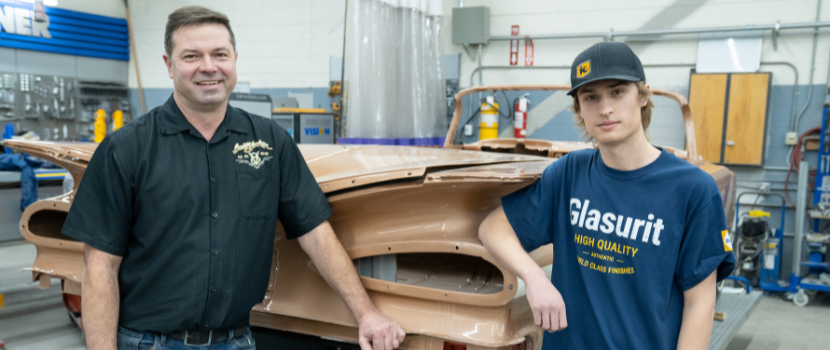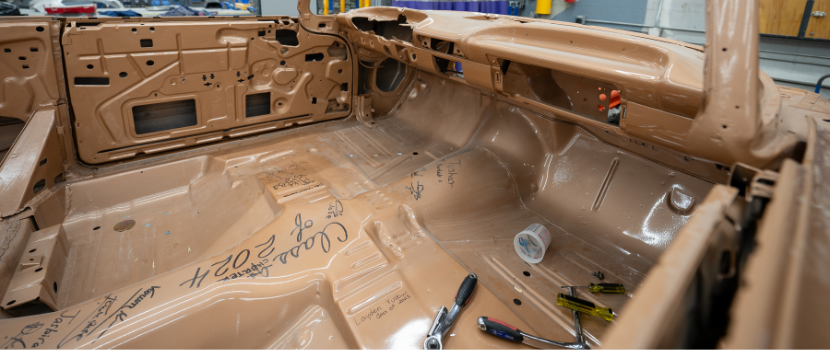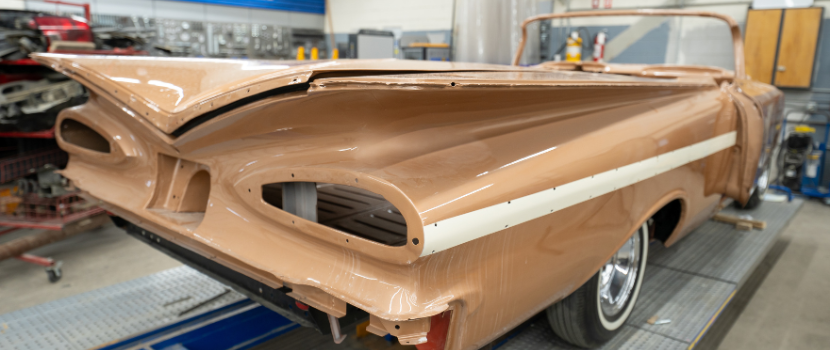SASKATOON A group of students from Saskatchewan Polytechnic had the unique opportunity to restore a rare, classic vehicle as part of their training with the program. Each year, students tackle a distinctive project, and for 2024, they took on the challenge of fixing the body of a 1959 Impala convertible.
"The 1959 Impala convertible left the dealership shiny and new but fell into disrepair over time. That is, until the current owner discovered it, recognized its value, and decided to restore it to its former glory,” says Scott Kucharyshen, Auto Body Technician program head.

The car was left outside to face Saskatchewan’s harsh weather. The Impala was used as a pace car with flagpole holes cut into the quarter panels and its frame was altered almost beyond recognition. A haphazardly welded engine and transmission had to be remedied. Rounding out the damage, the lower 15 cm of the car had nearly disintegrated due to salt exposure. The extensive work required made the vehicle a perfect choice for the class restoration project, notes Kucharyshen.
“Hands-on experiential learning is the most effective way for Auto Body Technician students to learn. It directly connects theory to real-life scenarios. As students progress through the program’s learning outcomes, they apply what they learn in the classroom to their hands-on assignments in the shop,” he says. “Each part of the car must be completed correctly. If a task isn’t done properly, they must redo it to meet roadworthy standards.”

Layden Yuskiw was one of the students who worked on the project. Now an Auto Body Technician graduate, he is currently apprenticing. To him, working on the 1959 vehicle was a dream come true.
“Working on the Impala at Sask Polytech was a highlight in my learning journey. I didn't know we'd be restoring an actual car, and when I found out, I was thrilled. Especially for a car this rare and valuable,” he says.
Students replaced the floor and repaired the body of the car, including the quarter panels, wheelhouses, fenders, doors, hood and trunk. They also rotisserie-painted the car in its original 1959 colours, gothic gold and snow crest white. The complex work required teamwork, attention to detail and communication.

Students sign the body of the car before returning it to the owner.
“Auto body work is team-based, requiring each student to contribute to the project’s overall progress. Students must work on their communication and teamwork skills throughout the program to meet project deadlines,” Kucharyshen says.
Adds Yuskiw, “Initially, we thought it was unsalvageable, but through teamwork and dedication, we turned it into something amazing. Everyone took pride in their work, knowing how important the car was and how their efforts added to its value.”
His experience as a Sask Polytech student translated his passion for cars into a career. The combination of technical training and hands-on experience was pivotal as he developed his skills and knowledge.
“Training to become a technician was always different and exciting. Whether we were in the classroom learning the foundations of the trade or in the shop applying those skills, each day offered new opportunities to learn and improve,” Yuskiw notes.
“Throughout my training, I received a lot of guidance and support from experienced technicians who were always there to answer questions and help me when I was uncertain. My goal is to build my experience and proficiency so I can return the favour to others by providing the same kind of support and guidance.”

Projects like the transformation of the Impala from an unrecognizable car to a restored beauty showcases the work of students and instructors alike.
“It’s always exciting to see a vintage car restored by Sask Polytech students at car shows or on the streets. Meeting up with former students and reminiscing about our time working on the vehicle is a rewarding experience. It highlights the lasting impact of our hands-on learning approach,” says Kucharyshen.
The certificate program offers technical and practical training to prepare students for careers in the motor vehicle body repair and refinishing industry. Graduates may be eligible for credit towards apprenticeship training. To learn more, contact the .
— Submitted by Sask. Polytech Media Relations




